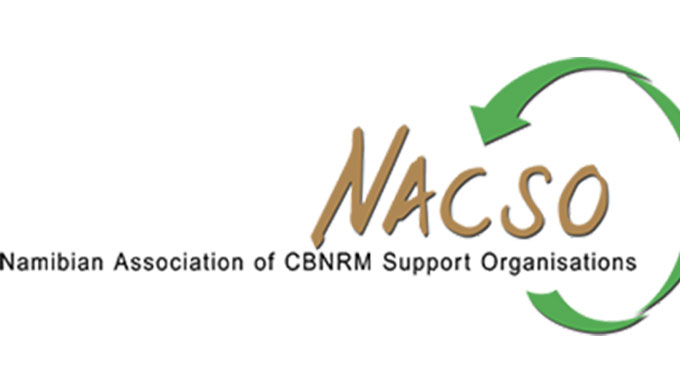Rural Namibians pin hopes for prosperous future on tourism lodges, hunting

Emmanuel Koro
Namibia’s rural communities are impressively running lodge and hunting agreements to reduce poverty in seemingly poor but wildlife rich semi-desert landscapes.
This is despite the Western animal rights groups’ harmful hunting ban threats.
“In 2017 Namibia’s 87 rural conservancies earned a total of R132 824 233 (US$8 854 949), with tourism having generated R80 117 640 (US$5 341 176),” said the Namibian Association of Community-based Natural Resources Management (CBNRM) Support Organisations (NACSO) in its 2017 State of Conservancy Report.
Conservation hunting grossed R32 503 047 (US$2 166 870) and from it conservancy residents’ protein base was boosted by meat distributed to them and valued at R12 566 280. Elsewhere within Namibia’s wildlife economy R5 191 002 (US$346 066) was earned from indigenous natural products with an additional R2 446 264 (US$163 084) miscellaneous income generated, some of it from interest charges on the products. The NACSO Report said that Conservancy residents earned a total cash income of R65 828 264 (US$4 388 550) from enterprise wages, with R42 081 247 (US$2 805 416) earned from joint-venture tourism and R18 861 815 (US$1 257 454) from conservancies, including R3 558 788 (US$237 252) from conservancy residents’ enterprise wages. The small and medium enterprises (SMEs) generated R1 326 414 (US$88 428). Conservancy residents earned R4 632 261 (US$308 817) from indigenous plants and R1 429 933 (US$95 329) from crafts.
“A total of R16 159 501 (US$1 077 300) was distributed to residents and used to support community projects by conservancies,” said the NACSO Report.
The earnings paint a brighter future for Namibia’s rural residents.
“We started the Conservancy Programme with four registered conservancies in 1998 and the number has grown to 89 registered conservancies, covering around 19 percent of communal areas with around 300 000 conservancy membership,” said NACSO director Ms Maxi Louis.
Sadly, Western animal rights groups’ continued lobby to stop hunting in southern Africa, including Namibia remains a major threat to these Namibian conservancies’ future business success.
Therefore, local residents are worried that without benefits from hunting there would be no incentive to conserve but poach wildlife, including lions, rhinos and desert-adapted elephants that attract tourists. They say that the proposed animal rights hunting ban would trigger poaching and inevitably collapse their tourism lodge and hunting agreements.
“The benefits from hunting have brought never-seen-before mindset changes for people in my conservancy from poachers to champions of wildlife conservation,” said the Kunene Region Anabeb Conservancy chairman Mr Ovehi Kasaona. “I remember poaching a big kudu for meat. My friends were also poachers for meat, including father and grandfather. My uncle even poached for rhino horn sale. In the past when we saw wildlife , we saw meat for the pot. But now we are seeing tourism business because we are making money from wildlife-based businesses including, lodges, game drives and hunting.”
Mr Kasaona said that some of the high-impact and mindset-changing benefits enjoyed by his conservancy include, employment creation from lodges and hunting agreements. They are using the money earned from hunting and lodge businesses to supply water to every household. They have also planned to supply solar power to every household, starting next year.
Other conservancies nationwide, share such wildlife use benefits driven attitude change. Observers say that this conservation and development model is set to bring greater rural tourism business and conservation successes in the future. But the Western animal rights groups’ anti-hunting lobby remains a threat to that success.
“Please, Western animal rights groups allow us to do what works for us and stop telling Namibian rural communities what to do with their wildlife,” said Ms Louis. “We have a unique product [tourism and hunting agreements]. It works. It creates socioeconomic and wildlife conservation opportunities for Namibians.”
NACSO provides quality tourism and conservation investments services to conservancies, upon receiving written requests assistance from them. They work in partnership with the Namibia Ministry of Environment and Tourism; eight pro-sustainable use local environmental NGOs, the University of Namibia and Namibian Parliament.
So far NACSO and its partners have succeeded in establishing one of Namibia’s two most successful rural conservancies lodges, under a community private sector partnership. They include Grootberg Lodge (Khoadi//Hoas Conservancy) that is spectacularly located on a flat mountain top and refreshingly overlooks a valley teeming with roaring lions, black rhinos and oryx that can be seen on daily game drives offered.
“Ms Maxi Louis of NACSO is an icon because she helped us assess the suitability of the Grootberg Lodge,” said Mr Bob Guibeb, a member of the Khoadi/Hoas Conservancy. “Now we are enjoying a win-win working relationship with our lodge business partner.”
NACSO and its partners also helped establish Twyfelfontein Country Lodge in Uibasen Twyfelfontein Conservancy. It is immersed in the UNESCO World Heritage Site where thousands of visitors worldwide are spoilt with stunning rock paintings of different species, including the Big Five. The rock paintings tales of wildlife use provide enough evidence that Western animal rights groups’ anti-use values seek to destroy – a hunting culture that has existed for centuries without driving any wildlife to extinction because they were hunted responsibly then, as it the case today.
Ten percent of Twyfelfontein Country Lodge’s average annual income is paid as land lease fees to the Uibasen Twyfelfontein Conservancy. The remainder goes to the private sector partner who pays for marketing; salaries, tax and all the costs associate with running the business. Khoadi/Hoas Conservancy’s Grootberg Lodge also pays the community 10 percent of its annual earnings.
The chairman of the Khoadi/Hoas Conservancy, Mr Asser Ndjitezeua said the money generated from hunting and Grootberg Lodge is being used to support a local primary school’s needs, establish drinking waterholes for both wildlife and livestock, in order to reduce human wildlife conflict. They also employ wildlife game guards and pay their office employees.
“About 90 percent of the Grootberg Lodge employees are from our community,” said Mr Guibeb. “They together with me, are now earning life-changing salaries that enable them to send their children to school.”
“Grootberg Lodge offers game drives to view black rhino, lion, desert and adopted elephants,” said Mr Ndjitezeua.
Elsewhere, the Twyfelfontein Country Lodge offers game drives and rock paintings and visits to the nearby cultural village.
A Twyfelfontein Country Lodge tour guide, Ms Monalisa Geises said that more than 80 000 tourists worldwide, including film stars and celebrities visit the Twyfelfontein UNESCO declared world heritage site annually to view the stunning rock paintings of wildlife found in the area centuries ago and still existing today. The rock art wildlife include rhino, desert-adapted elephants, antelope, giraffes, leopard, zebra and lion.
The Twyfelfontein Country Lodge employs 90 people from the Uibasen Twyfelfontein Conservancy as tour guides, waiters and waitresses and cleaners. All members of the Conservancy who are above 18 years receive an average annual payout of R5 000 (US$333). The Conservancy also uses funds generated from its 56 twin-room upmarket lodge to develop community development projects. Other benefits include community garden, soccer field with spectators stand, orphans grants payouts, livestock vaccination, and employment of community game guides. Some of their revenue is used to pay salaries of the eight officers who work in the Uibasen Twyfelfontein Conservancy office.
Despite the nation-wide life-changing benefits from hunting and tourism businesses, Western animal rights groups including South Africa-born comedian Trevor Noah are calling for a hunting ban in Africa, claiming that hunting communities are receiving insufficient benefits. Namibia’s minister of Environment and Tourism Mr Shifeta Pohamba dismissed this harmful propaganda in a statement last month. “The animal rights groups need to be called to order,” said Mr Pohamba. “Their agenda is to stop everything about wildlife use. I see human rights violation when they impose their own values and decision on Africans. They are the same thing as poaching.”
Even some western citizens such as Los Angeles-based NGO, the Ivory Education Institute managing director, Mr Godfrey Harris agree that “there is no reason for Western animal rights groups to interfere in the management of wildlife” in sovereign African countries.
“How dare you continue advancing a colonial attitude in telling Africans what do with their wildlife,” said Mr Harris in a protest statement at the UN Convention on International Trade in Endangered Wild Species of Fauna and Flora (CITES) 18th meeting in Geneva, Switzerland in August.
A Torra Conservancy leader, Mr Euphrasius Dawids said that decisions on how to use wildlife hunting and tourism lodge revenue “are democratically made” in his community.
“We are happy with our benefits from both hunting and lodge business,” said Mr Dawids. “Therefore, we would like to invite Mr Noah to come and see the benefits.”
Notably, the threats to Namibia’s Conservancy Programme future success are not only from the Western animal rights groups. Other threats that NACSO, the government of Namibia and their development partners are facing range from human wildlife conflict, climate change and environmental refugees from within Namibia that go to settle in wildlife rich neighbouring communities for employment, better grazing pastures and in some cases start poaching there.
Under Human Wildlife Conflict policy, the Namibian Government has funds to offset human wildlife conflict costs.
Elsewhere, a Torra Conservancy-based human wildlife conflict coordinator working for the Namibia Integrated Rural Development Nature Conservation, Human Wildlife Conflict Support Unit Coordinator, Mr Cliff Tjikundi said that a new early warning technology has been introduced to address human wildlife conflict.
“The technology senses electronic signals from collared lions from afar, starts flashing and sends alarm signals that give the communities enough time to react,” Mr Tjikundi. “Mr Flip Stander, a Namibian invented the early warning system to minimise human wildlife conflict.”
Meanwhile, all the conservancies have expressed concern over the impact of climate change on agriculture, with most of them now saying that their future lies not agriculture but in lodge business and hunting.
“To address these threats the Namibian pro-sustainable use environmental NGOs have agreed to promote public awareness and education on the need to support our life-changing conservancy programme that is also promoting nature conservation,” said Ms Louis. “Nobody is going to stop us from doing that.”
–Emmanuel Koro is a Johannesburg-based international award-winning environmental journalist who has written extensively on environment and development issues in Africa.







Comments